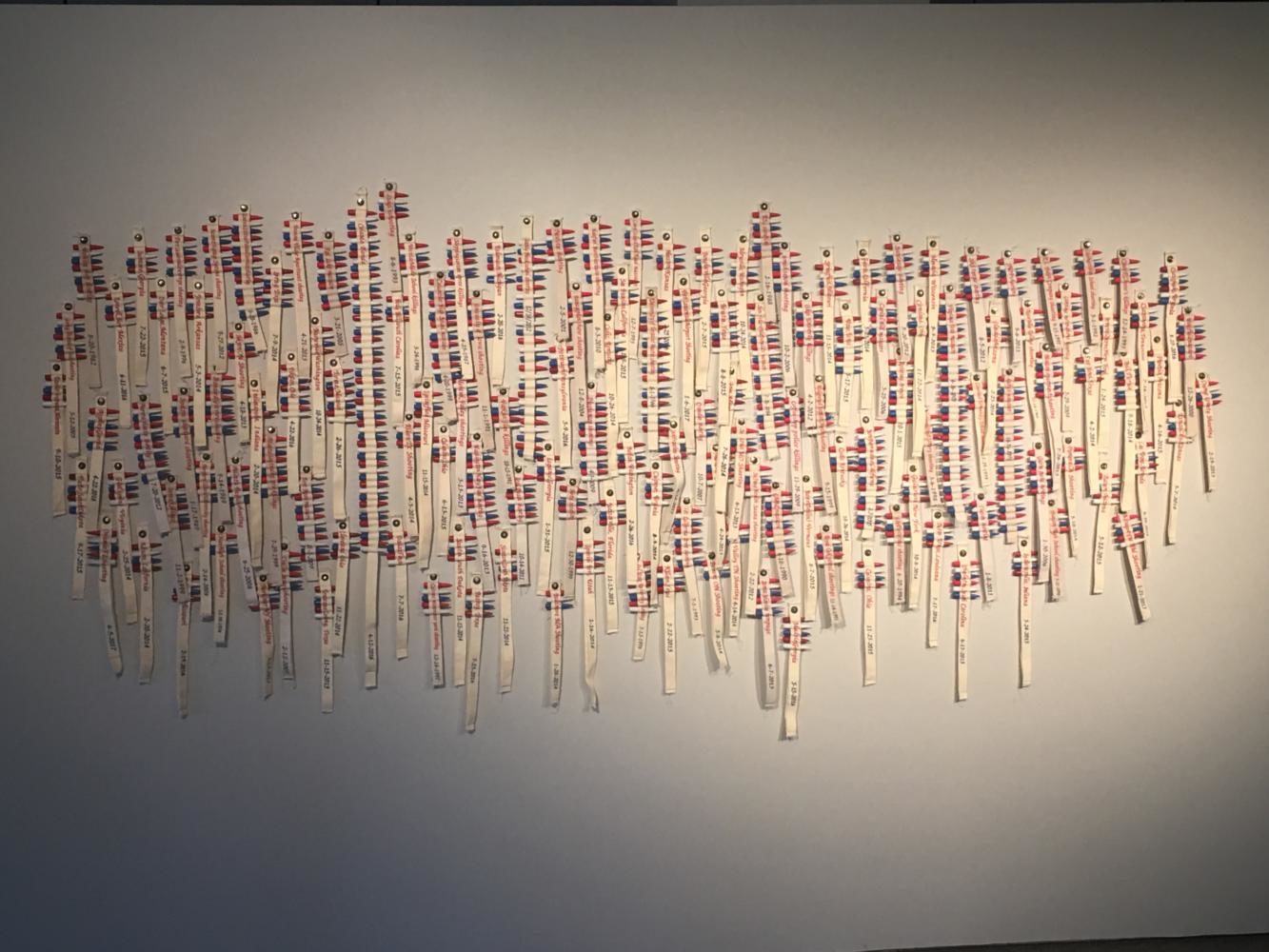Art faculty showcase pieces in the Monroe Library
3-D printing and cloth (This piece has a cloth strand for every mass shooting in America starting with the University of Texas, Austin, TX, August 1, 1966. The piece is ongoing.) Photo credit: Andres Fuentes
August 30, 2017
At the very pinnacle of the Monroe Library lies the Collins C. Diboll Art Gallery, an entire floor dedicated to showcasing art for the Loyola community. The gallery is always changing, showcasing new pieces from local artists to internationally-known icons.
The current exhibit is the Art Faculty Spotlight, a mixture of different types of pieces from the art professors at Loyola.
The art ranges from basic oil paintings to 3D printed models of buildings to city landscapes and even sculptures.
The exhibit is a great way to educate students, according to Karoline Schleh, assistant professor of art.
“The Diboll Gallery is dedicated to reinforcing Loyola’s mission by serving as an educational exhibit space and offering free exhibitions,” Schleh said.
As a studio art professor, Schleh sees educational value in the oil paintings on cardboard she had done of her children.
“I made these small oil paintings on cardboard as demonstrations for my painting classes I teach at Loyola to discuss not only materials and technique, but also to begin the conversation on understanding the concepts of observation and representation,” she said. “I worked on these in the classroom with the students so they could see the process directly.”
Schleh recognizes the advantages students have when there is a model to reference, especially when the model is on display on campus.
Assistant Professor of Interactive and New Media John Edward Seefeldt agreed, saying, “I enjoy the exhibitions in the gallery and feel they play an important role in the design and art curriculum.”
Seefeldt has several pieces in the gallery, a group in particular being glass bottles scattered around the exhibit.
Two sets of bottles contain microphones in them that transmit sound to the remaining bottles that have a speaker in them. The event is supposed to trigger a pareidolia, or a physiological phenomenon in which the mind responds to a stimulus.
Seefeldt also has a 3D printed model of the town of Fazendeville on display.
“It was created for display in the National Park Services Chalmette Battlefield visitors center,” Seefeldt said.
The model was constructed using photographs taken in the 1960s.
“The photographs were taken as part of a campaign to annex and remove the African-American community. The model was 3D printed using durable plastic and designed to fit inside a travel case allowing for easy transportation for offsite educational outreach,” Seefeldt said.
Other pieces of the exhibit include monotypes of New Orleans by Barbara Brainard, pieces by Bill Kitchens and an array of cloth and 3D printed bullets by Mark Grote.
Grote’s work is a representation of the mass shootings that have plagued the nation since a shooting at the University of Texas in 1966. With each shooting, Grote has a piece of cloth with the location and the date of the shooting as well as 3D printed bullets painted red, white and blue.
“I’m struck by the centrality of place in the work of Kitchens, Grote and Brained. The overtly political realm that Grote explores, with the direct address of issues of justice and peace, and then the seemingly mundane places — like a living room, a neighborhood — which of course are just contexts for other brands of politics,” Fr. Gregory Waldrop, S.J., director of the Dilbol Art Gallery, said.








